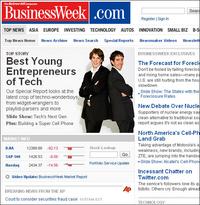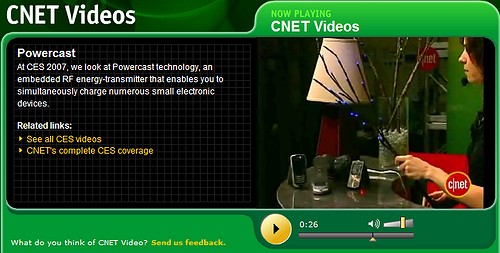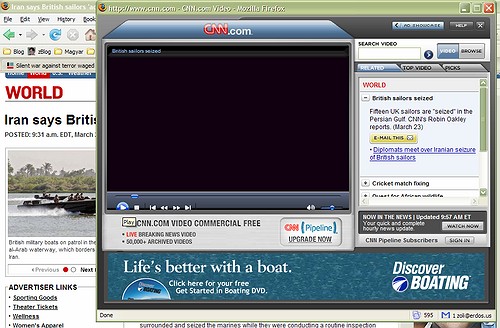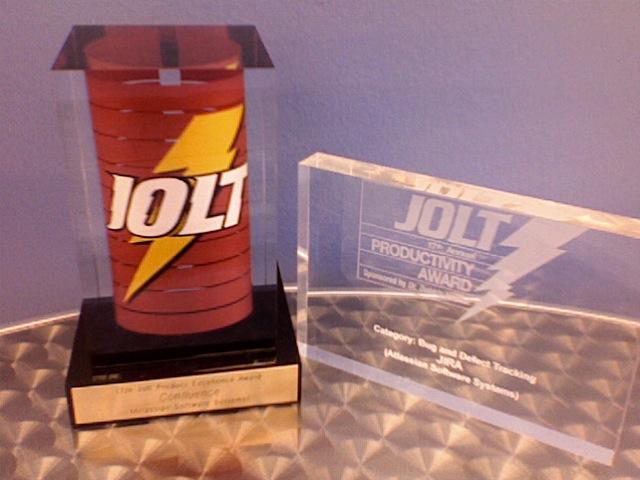-
“Odd thing for an office ’style’ company to go into – cartoons”
-
“Brilliant strategic move or jumping the shark? I can’t decide.”
-
“At least all their eggs arent in online software; office”
-
“I understand doing these things because you get people creating content that you can then monetize…”
The reactions to TechCrunch announcing ToonDoo, a comic strip creator were rather mixed – just as I expected. Not so much because of tool itself, but because of it’s relationship to Zoho, the Granddaddy of the Office 2.0 market. Here’s the CEO’s explanation:
Joke apart, ToonDoo certainly isn’t part of the Zoho Suite, and to dispel some of the myth, it’s not about keeping eggs in different baskets, and there are no evil monetization plans either.
I’ve always been fascinated with what really drives entrepreneurs. As Advisor to Zoho I got to know some of the team, and have been planning to share some of my thoughts for a while. Zoho is just one, albeit the most fashionable brand of a larger company, Adventnet. Adventnet is not a “hot name” like Zoho – even their website looks boring. But their product list is over a hundred items long. “Boring”, reliable, solid cash-cows. 
They are not a startup by any means: they have been in business for ten years, organically growing to 600+ employees and millions of dollars in revenue (without outside investment). Yet working with them feels like working with a startup: in the US they have a team of about 20, the key feature in the office is a pool table, although they are hardly ever in, often working remotely.
The solid position, and being self-funded allows them to do a few things that don’t directly fit business their strategy – they just like “doing good”.
![]() One of these non-business projects funded entirely by Adventnet is Jambav, a site offering games and educational tools for children, ranging from toddlers to preschoolers, as well as resources for kids with special needs, (Update: read Scoble for some background) and community, forum, blogs for parents. Everything at Jambav is free, and so is their latest creation, ToonDoo. The Jambav team realized that us, “grown-up kids” can also use it, so they ended up releasing it under a separate brand.
One of these non-business projects funded entirely by Adventnet is Jambav, a site offering games and educational tools for children, ranging from toddlers to preschoolers, as well as resources for kids with special needs, (Update: read Scoble for some background) and community, forum, blogs for parents. Everything at Jambav is free, and so is their latest creation, ToonDoo. The Jambav team realized that us, “grown-up kids” can also use it, so they ended up releasing it under a separate brand.
Education is another subject CEO Sridhar Vembu frequently thinks and writes about:
- College Education and the Placebo Effect, Part1, Part 2, and Part 3.
- Why is Education so Costly
- The PhD Glut
He has a personal interest in the subject, having “wasted” 4 years getting his PhD in Princeton: “I actually had to unlearn a lot, to be in business. And I didn’t particularly enjoy the PhD experience either. If I were to go through life again, I wouldn’t repeat that PhD, that’s for sure.”
He puts his money where his mouth is: he launched “Adventnet University” in India, bringing in disadvantaged teenage kids and putting them through 2 years of education, with a strong engineering / software focus. Is this all altruism? Probably not. Adventnet is hiring a lot of engineers and some will likely come from their own training program. One does not have to be entirely altruistic to do philanthropy. For these kids, who otherwise would have no hope of ever going to college, “Adventnet University” is a life-changing event. See fellow Enterprise Irregular Vinnie Mirchandani’s thoughts here.
But I am trying to make a bigger point here, so let me move on to another company now – one that I have absolutely no business relationship with.
 A good year or so ago Atlassian was not a widely talked-about name, although they were already the market leader in the Enterprise Wiki space, and prior to that had achieved phenomenal success with their first product, Jira. Without the luxury of spending VC money, they had their priorities straight: first get the products right, let them sell on their own strengths, then start spending on marketing and PR. After financial success came recognition: they keep on winning awards, the Founders became Entrepreneur of the Year and are now featured on the cover of Business Week.
A good year or so ago Atlassian was not a widely talked-about name, although they were already the market leader in the Enterprise Wiki space, and prior to that had achieved phenomenal success with their first product, Jira. Without the luxury of spending VC money, they had their priorities straight: first get the products right, let them sell on their own strengths, then start spending on marketing and PR. After financial success came recognition: they keep on winning awards, the Founders became Entrepreneur of the Year and are now featured on the cover of Business Week.
Mike Cannon-Brookes, Co-Founder and CEO is an avid blogger who openly talks about “life at Atlassian”. It’s through his blog that I found out about their commitment to philanthropy. Every employee can spend 6 workdays a year on their favorite non-profit or charity. Is that a big deal? Well, considering an average of 220 workdays a year, it translates to 2.75% of their productivity. Salesforce.com is known to devote 1% of revenues to charity. I am not underestimating that 1%, but it’s spent with a stroke of a pen… whereas in Atlassian every employee is personally involved. (Compare that to my experience in a very Big, very Blue company, where management kept on publishing reports on employee contribution to United Way (the only choice) until the desired quotas were achieved… ) Update: I stand corrected, Salesforce.com employees can also donate 1% of their work-time.
![]() On a personal side Mike issued a Kiva Challenge. Technically speaking, Kiva is not charity, handing out micro-loans to small businesses – but these are interest-free, high-risk (?) loans. One could say it’s a very “inefficient” process: the loan amounts can be as little as $25, and typically not more than a few hundred dollars. Managing it, and – like Mike does – soliciting other lenders, matching their contributions is time-consuming, but I’m sure as a true Entrepreneur, Mike actually enjoys it. Now, the money could just be given to a large charity, and disappear in the labyrinth of bureaucracy, but helping small businesses take off does more good in the long run. “Give a man a fish and he will eat for a day. Teach a man to fish and he will eat for a lifetime.”
On a personal side Mike issued a Kiva Challenge. Technically speaking, Kiva is not charity, handing out micro-loans to small businesses – but these are interest-free, high-risk (?) loans. One could say it’s a very “inefficient” process: the loan amounts can be as little as $25, and typically not more than a few hundred dollars. Managing it, and – like Mike does – soliciting other lenders, matching their contributions is time-consuming, but I’m sure as a true Entrepreneur, Mike actually enjoys it. Now, the money could just be given to a large charity, and disappear in the labyrinth of bureaucracy, but helping small businesses take off does more good in the long run. “Give a man a fish and he will eat for a day. Teach a man to fish and he will eat for a lifetime.”
I could cite more examples, but this story has to conclude at some point.
I admit I am biased, I do like these companies, and probably write about them more often than others.
There are business reasons: they both are leaders in their market, not only have best-in-class products but also provide excellent, personal support and are very transparent about business, strengths, weaknesses, even bug reports. But other than the business criteria, they are also just a bunch of “likeable” people, and I think their non-business, charitable activities play an important role in that. I’d venture to say that everything else being equal, as a small business I’d probably prefer buying from such a “likeable” vs. one with a great product, but with aggressive sales, arrogant support, and generally “unpleasant” people.
What do you think? Is “doing good” a luxury, does it just serve personal satisfaction, or does it have a place in business, especially in startups / emerging businesses? On the other hand, if there is indirect business “payoff”, is it just an investment, or still a philanthropic act?
Update (4/8): Talk about the importance of buying from a “likeable” company, check out: I Canceled My Basecamp Account Today.


 )
)

 Too bad I can’t buy it – it’s a private company. Powercast makes the old dream of
Too bad I can’t buy it – it’s a private company. Powercast makes the old dream of 

 I’ll be moderating another
I’ll be moderating another 
 (credit to
(credit to 
 (see
(see  P.S. They won
P.S. They won  No, it’s not the Big One, not even an earthquake… for three days next week,
No, it’s not the Big One, not even an earthquake… for three days next week, 
Recent Comments